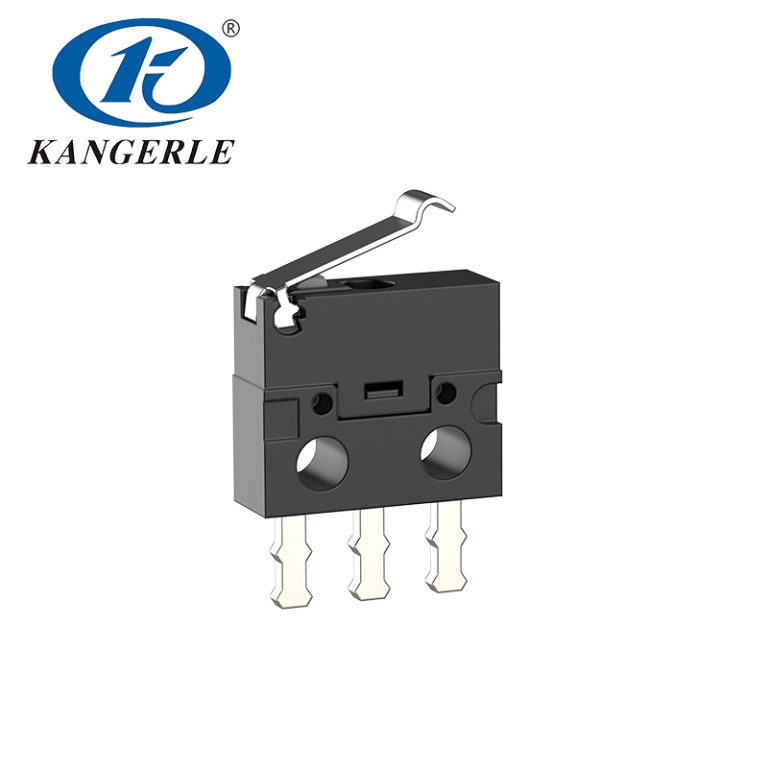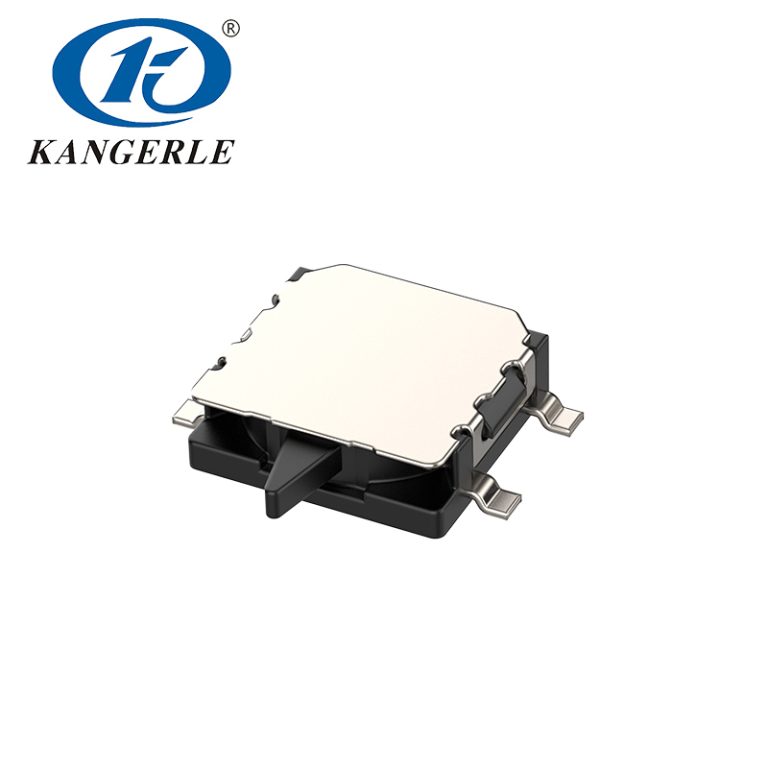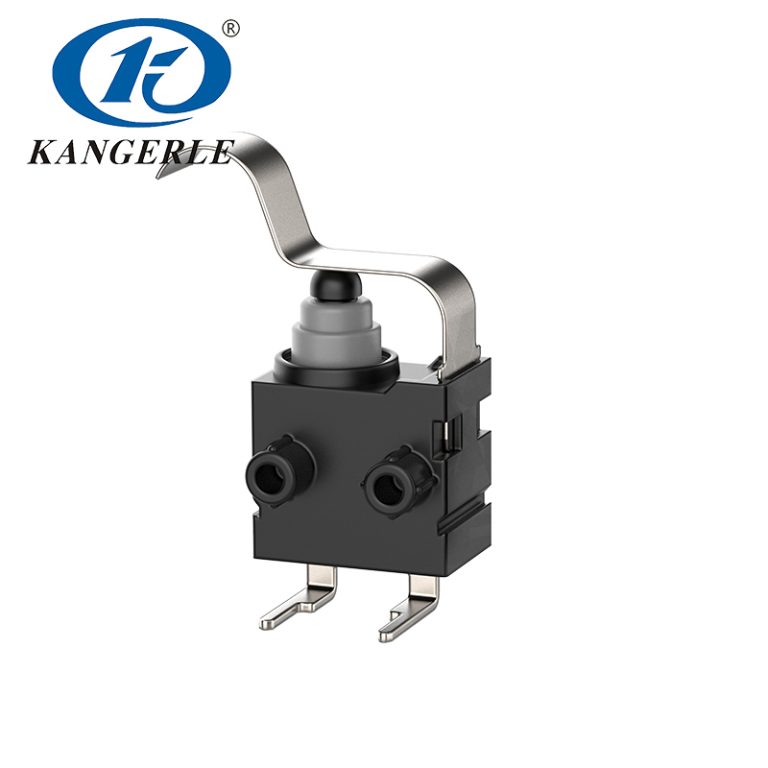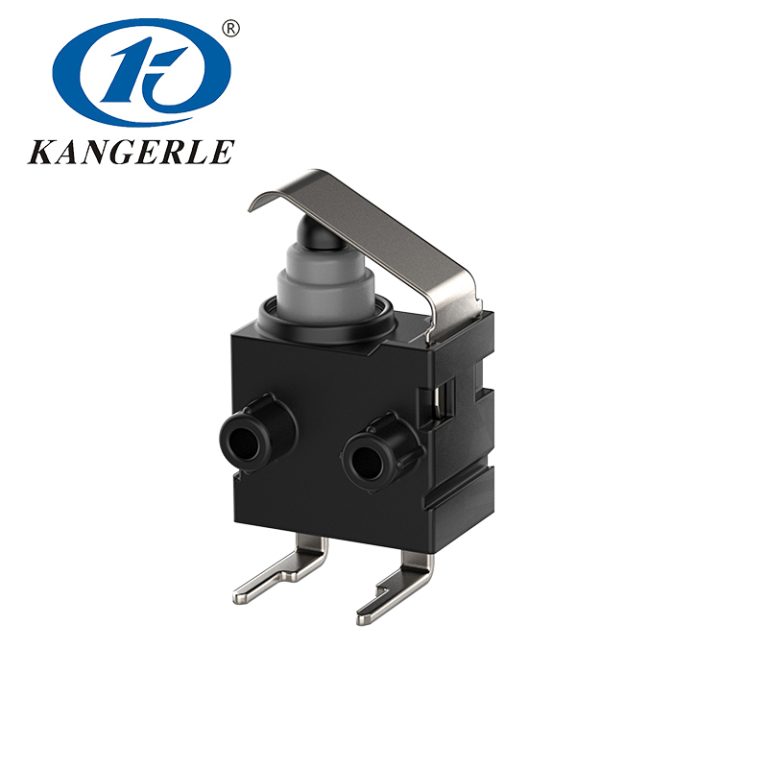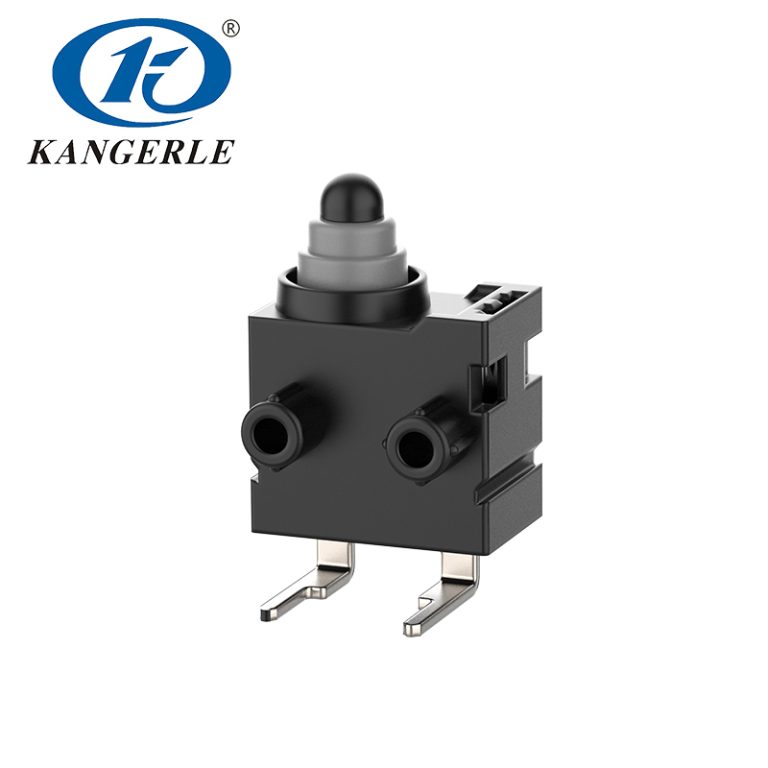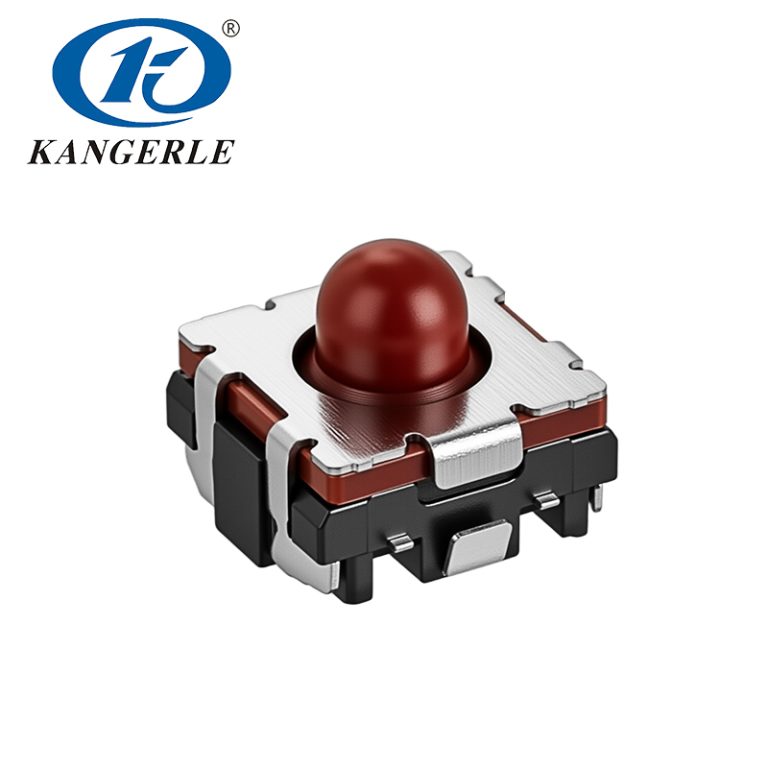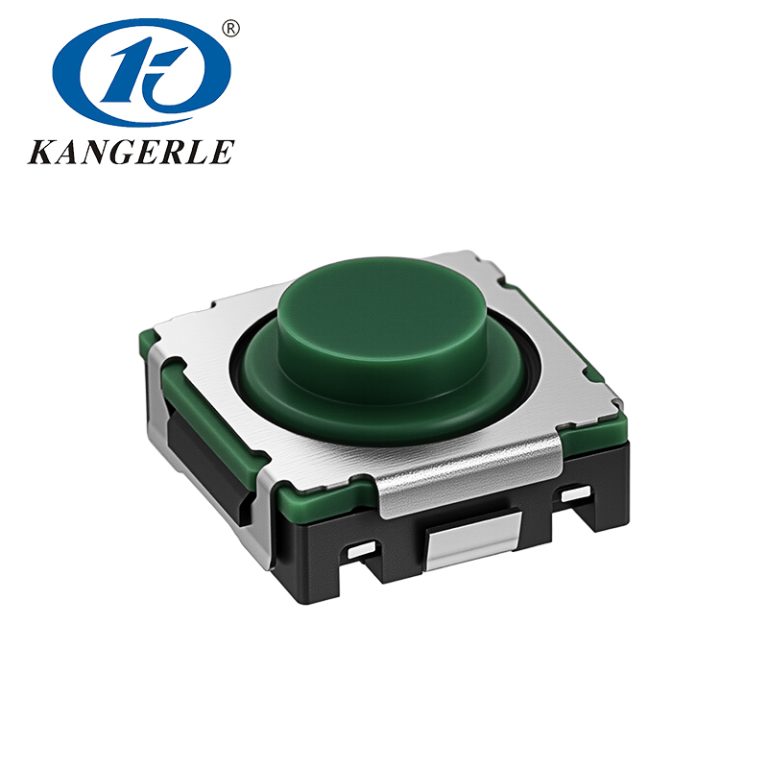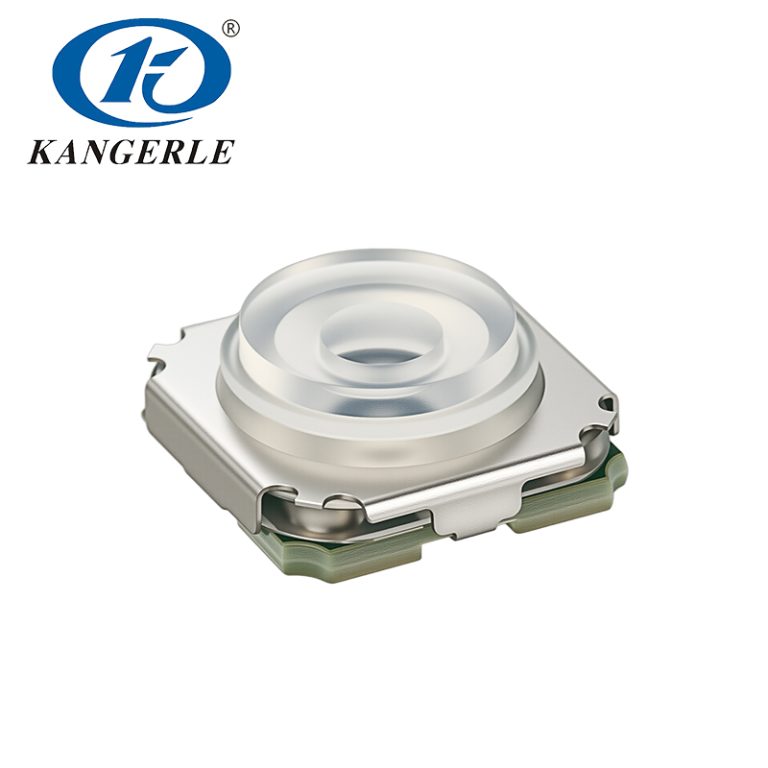In today’s fast-changing car industry, every part must be precise and dependable. Tactile switches, though small, are vital for making vehicles work smoothly, from dashboard buttons to seat controls. Among the many switch circuit types, SPST-NO tactile switches for cars and single-pole double-throw (SPDT) switches are popular choices. But which one fits automotive needs best?

This article explores the features, benefits, and uses of SPST-NO tactile switches and SPDT switches. We’ll focus on why SPST-NO tactile switches for cars often shine in car designs. We’ll also look at reliability and performance, including details about models like the KEL-E005 and KEL-E006 from KANGERLE.
What Are Tactile Switch Circuit Types?
Tactile switches give a clicky feel when pressed. They’re perfect for car controls like buttons and keypads. Their small size, strength, and quick response make them great for Automotive Central Control systems. To pick the right switch, you need to know the two main types: SPST-NO (Single-Pole Single-Throw, Normally Open) and SPDT (Single-Pole Double-Throw).
What’s an SPST-NO Tactile Switch?
An SPST-NO tactile switch is a basic design. It has one input and one output. The circuit stays open (off) until you press it. Then, it connects and lets electricity flow. This simple setup makes SPST-NO tactile switches for cars very reliable for tasks like turning on a light or moving a seat.
Key Features of SPST-NO Switches (e.g., KEL-E005 and KEL-E006):
- Rated Load: DC 12V, 50mA
- Circuit: SPST-NO
- Operating Temperature: -40°C to 90°C
- Electrical Life: ≥100,000 cycles
- Operating Force: 180-400gf
These features, found in KANGERLE’s KEL-E005 and KEL-E006 models, ensure they last long in tough car conditions.

What’s an SPDT Tactile Switch?
An SPDT tactile switch has one input but two outputs. It can switch between two circuits. When you press it, it connects the input to one of the outputs. This makes it useful for tasks like switching between high and low headlights. But its extra parts can sometimes cause issues in cars, where things like shaking or heat can break complex designs.
Why SPST-NO Tactile Switches Are Great for Cars
For car use, SPST-NO tactile switches for cars often beat SPDT switches. They’re simple, reliable, and save money. Let’s look at why they’re a top pick.
Simple Design Means Fewer Problems
SPST-NO tactile switches have fewer parts. This makes them less likely to break. Cars face constant shaking and temperature changes. A simple switch, like the KEL-E005 or KEL-E006, handles these challenges well. They last for over 100,000 presses, which means they stay reliable for years.
Saves Money for Big Projects
Car makers want parts that work well but don’t cost too much. SPST-NO tactile switches are cheaper to make than SPDT switches because they’re simpler. This is great for cars that need lots of switches, like for dashboard buttons or lights.
Tough and Waterproof for Harsh Conditions
Car switches must handle heat, cold, water, and dust. The KANGERLE KEL-E005 and KEL-E006 work from -40°C to 90°C. They’re also waterproof. This makes them perfect for car parts like door buttons or charging ports that face tough weather.
Best Uses for SPST-NO Tactile Switches in Cars
SPST-NO tactile switches for cars work well for:
- Lights Inside: Turning on dome or reading lights with one press.
- Seat Controls: Moving seats with clear, precise buttons.
- Window Buttons: Opening or closing windows with a single touch.
- Car Entertainment: Making touch controls feel responsive in Automotive Central Control
SPDT switches are better for tasks like switching between light modes or fan speeds. But these tasks are less common in cars, where single-action controls are more popular.
SPST-NO vs. SPDT: A Quick Comparison
To help you choose, here’s a table comparing SPST-NO tactile switches and SPDT switches for car use:
| Feature | SPST-NO Tactile Switches | SPDT Tactile Switches |
| Design | Basic, one circuit (on/off) | More parts, switches two circuits |
| Reliability | Very dependable, fewer parts break | Okay, but more parts can wear out |
| Cost | Cheaper, great for making lots of cars | More expensive, costs add up |
| Car Uses | Lights, seats, windows, Automotive Central Control | Headlight modes, fan speeds |
| Strength | Lasts long (e.g., ≥100,000 cycles for KEL-E005) | Good, but more likely to fail |
| Weather Resistance | Waterproof, -40°C to 90°C | Depends on model, often less tough |

This table shows why SPST-NO tactile switches for cars are often the better pick for car makers who want dependable and affordable parts.
KANGERLE: A Top Micro Switch Maker
Started in the early 1990s in Wenzhou, China, ZHEJIANG KANGERLE ELECTRONICS is a trusted name in making micro switches and tactile switches. With over 20 years of know-how, KANGERLE creates strong, high-quality switches like the KEL-E005 and KEL-E006. These are built for tough jobs in cars, security systems, medical tools, and gadgets. KANGERLE has ISO9001:2015 and IATF:16949 certifications, showing their commitment to quality and innovation for customers worldwide.
Tips for Picking Tactile Switches for Cars
When choosing between SPST-NO tactile switches and SPDT switches for cars, think about these points:
What Your Car Needs
Figure out if you need a simple on/off switch (SPST-NO) or one that flips between two modes (SPDT). For most car controls, like lights or windows, SPST-NO tactile switches for cars are enough and work better.
Handling Tough Conditions
Car switches face heat, cold, shaking, and water. SPST-NO tactile switches, like those from KANGERLE, are often waterproof and work in extreme temperatures, making them a great fit.
Long Life and Easy Upkeep
Switches that last long, like the KEL-E005 and KEL-E006 with over 100,000 cycles, mean fewer repairs. This keeps cars running smoothly for years.
FAQs About SPST-NO Tactile Switches for Cars
Q1: What do SPST-NO tactile switches for cars do?
A: SPST-NO tactile switches for cars handle single tasks like turning on lights, moving seats, or opening windows. They stay off until pressed, then connect the circuit for reliable control.
Q2: How strong are SPST-NO tactile switches in cars?
A: SPST-NO tactile switches are very tough. They often last over 100,000 presses. They work in extreme cold or heat (-40°C to 90°C) and are waterproof, perfect for car conditions.
Q3: Are SPST-NO tactile switches better than SPDT for cars?
A: SPST-NO tactile switches are often better for cars. They’re simpler, cheaper, and more reliable. They’re great for single tasks, which are common in Automotive Central Control. SPDT switches are better for switching between modes.
Q4: Can SPST-NO tactile switches work in electric cars?
A: Yes, SPST-NO tactile switches for cars are used in electric vehicles. They control things like charging ports, lights, or buttons in Automotive Central Control. Their waterproof and strong designs make them a good match.
Q5: How do SPST-NO tactile switches improve car safety?
A: SPST-NO tactile switches provide clear, clicky feedback. This helps drivers use controls without looking, keeping their focus on the road. Their reliability also prevents failures in key systems.
Find the Best Tactile Switches for Your Car Projects
Picking the right tactile switch for your car project can boost performance, safety, and user happiness. SPST-NO tactile switches for cars, like the KEL-E005 and KEL-E006, are simple, strong, and budget-friendly. They’re perfect for car controls like lights, seats, or Automotive Central Control systems. Whether you’re building dashboards or electric vehicle systems, these switches deliver the dependability you need.
Want to improve your car designs with top-notch tactile switches? Check out KANGERLE’s website to see their wide range of micro switches and tactile switches. Reach out to their team for custom solutions that fit your needs.

